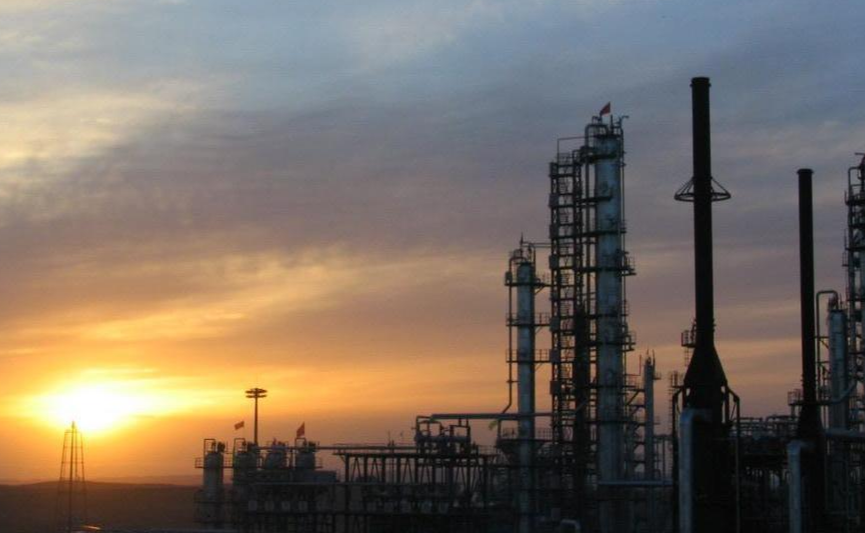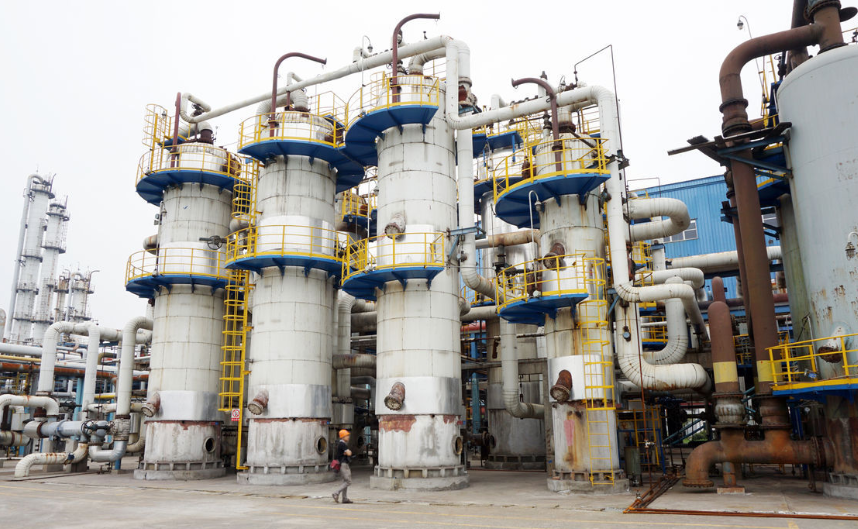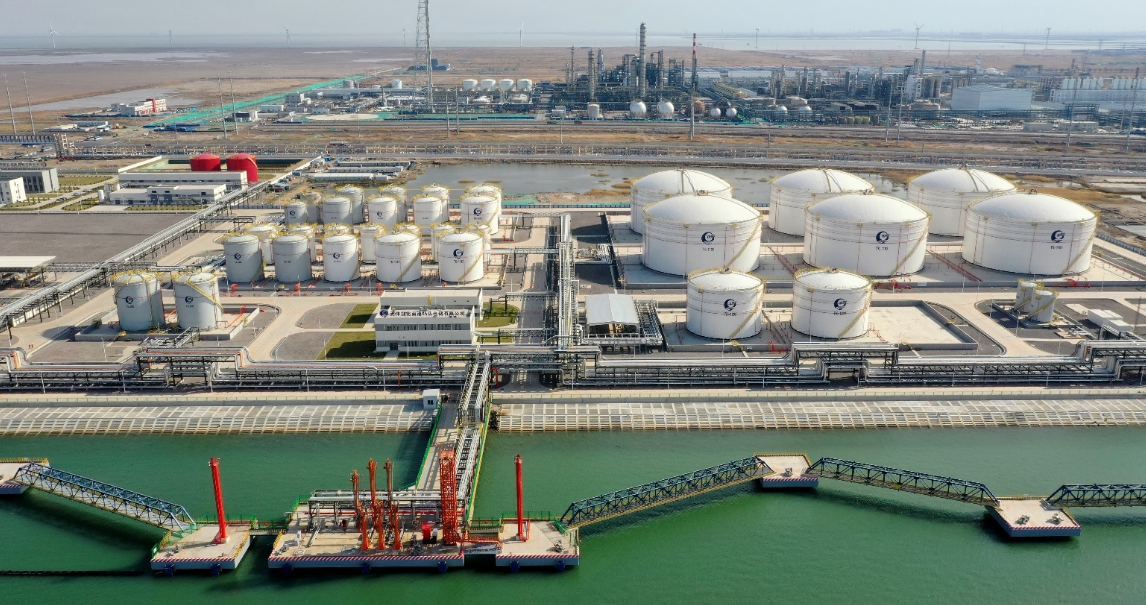Real estate demand for good superposition photovoltaic glass has been put into production, optimistic about the annual soda ash price upward

Photovoltaic installed capacity has increased significantly, and photovoltaic glass is expected to drive the demand for soda ash to increase rapidly. In 2021, the global PV installed capacity reached 170GW, and the domestic PV installed capacity was nearly 55GW. According to CPIA data, during the 14th Five-Year Plan period, China's annual new photovoltaic installed capacity will exceed 75GW. The increase in photovoltaic installed capacity and the continuous increase in the permeability of superimposed double glass modules will greatly stimulate the demand for photovoltaic glass, and then drive the rapid growth of soda demand. According to Baichuan, the current stock of photovoltaic glass has dropped from the high point at the beginning of the year to about 63,000 tons, and the average price of 3.2mm coating has further risen to 28 yuan/square meter. In 22 years, the total new daily melting volume of domestic photovoltaic glass is about 6550 tons/day, which corresponds to an annual increase of about 2.36 million tons of photovoltaic glass. According to the photovoltaic glass consumption of 0.2 tons of soda ash calculation, the year's new soda ash demand of about 470,000 tons, in the year without new production capacity, soda ash supply tight balance situation is expected to maintain, the price or will continue to rise.
The current soda ash export is still at a low level, and the subsequent volume price is expected to exceed expectations. China is a net exporter of soda ash, with domestic exports of about 760,000 tons in 21 years, and exports of more than one million tons in 20 years and previous years. Overseas chemical synthetic soda ash production capacity accounts for about 20% (mainly for ammonia alkali process), and soaring energy prices have pushed up the cost of overseas soda ash. At present, the proportion of domestic exports is still less than 5%, and the subsequent domestic soda ash export volume and price are expected to achieve more than expected growth. (Report source: Future Think Tank)

1.2 Under the background of stable economy, the chlor-alkali economy is expected to rise, and the export arbitrage window is opening
1.2.1 The resource properties of calcium carbide are prominent under the background of carbon neutrality
Calcium carbide energy consumption control is becoming stricter. On March 5, 2021, the Government work report of The State Council pointed out that it is necessary to do a solid job of carbon peaking and carbon neutrality, formulate an action plan for carbon emissions peaking before 2030, and optimize the industrial structure and energy structure. According to the survey data of China Petroleum and Chemical Industry Federation, the number of enterprises with carbon emissions of more than 26,000 tons of standard coal in the whole industry is about 2,300, and the total carbon emissions account for 65% of the total industry, and mainly concentrated in methanol, synthetic ammonia, calcium carbide, PVC, coal to oil and other sub-industries. Among them, 40% of the production cost of calcium carbide industry is power consumption, a ton of calcium carbide production requires 3,500 degrees of power consumption, and its production of raw materials in the forging process will also emit a lot of carbon dioxide. The characteristics of high energy consumption and high emission of calcium carbide make it become the key rectification object under the double carbon target in China. Taking Inner Mongolia as an example, in February 2021, the autonomous region government issued Several Safeguard Measures to Ensure the completion of the "14th Five-Year Plan" dual control targets for energy consumption, and determined that the region's dual control targets for energy consumption in 2021 are a 3% reduction in energy consumption per unit of GDP and an increase in energy consumption of 5 million tons of standard coal. No longer approve coke (carbon), calcium carbide, polyvinyl chloride (PVC) and other projects, there is a need to build, must be implemented in the area of capacity and energy consumption reduction replacement, which marks the further control of calcium carbide energy consumption in China.

China's calcium carbide production capacity continues to withdraw, and some production capacity will resume in 2021, but it is still in a tight supply state. China's calcium carbide production capacity is mainly concentrated in northwest and North China, and the production capacity of the two places accounts for more than 60%. In addition, China's calcium carbide industry concentration is low, representative enterprises include Zhongtai Chemical, Xinjiang Tianye, Junzheng Group, Hubei Yihua and so on. Since 2015-16, due to environmental protection limited production, backward production capacity clearance and other policies, China's calcium carbide production capacity has been declining, effective production capacity from 44.29 million tons in 2016 to 33.48 million tons in 2021, and the withdrawal capacity has reached 10.81 million tons. In 2020, China's calcium carbide production was boosted by the downstream PVC industry boom, which increased to 27.579 million tons, exceeding the level in 2016, and the capacity utilization rate increased from 60%-65% in the past four years to nearly 85%. Entering 2021, the industry has about 700,000-800,000 tons of calcium carbide production, making the effective capacity of the industry slightly increased. At the same time, due to the decline in the downstream real estate boom, and the rapid rise in PVC prices led to a decline in acceptance of the end, the supply and demand of the calcium carbide market was weak, and the price fell gradually from the fourth quarter. For 2022, according to Zhuochuang Information and Baichuan Yingfu statistics, the domestic production capacity will be about 2.4-2.7 million tons of calcium carbide. However, considering that the current domestic PVC calcium carbide matching rate is less than 80%, at the same time, the current domestic completely new commercial calcium carbide production capacity will not be approved, but needs to exist as a supporting PVC new production capacity. Therefore, based on the current domestic effective production capacity of 33.48 million tons of calcium carbide, according to 80% of the downstream application in PVC 20% of calcium carbide for non-supporting PVC production, assuming that half of them will gradually withdraw under the background of the industry matching rate increase, it is expected that there will be about 2.7 million tons of calcium carbide production capacity withdrawal in the future. Therefore, in the context of the overall elimination and addition of the industry, new calcium carbide devices may appear in recent years, but we judge that the overall calcium carbide production capacity will basically not grow, calcium carbide industry will be in a tight supply situation for a long time, and the change mainly lies in the improvement of the PVC matching calcium carbide rate.
- EMERSON
- Honeywell
- CTI
- Rolls-Royce
- General Electric
- Woodward
- Yaskawa
- xYCOM
- Motorola
- Siemens
- Rockwell
- ABB
- B&R
- HIMA
- Construction site
- electricity
- Automobile market
- PLC
- DCS
- Motor drivers
- VSD
- Implications
- cement
- CO2
- CEM
- methane
- Artificial intelligence
- Titanic
- Solar energy
- Hydrogen fuel cell
- Hydrogen and fuel cells
- Hydrogen and oxygen fuel cells
- tyre
- Chemical fiber
- dynamo
- corpuscle
- Pulp and paper
- printing
- fossil
- FANUC
- Food and beverage
- Life science
- Sewage treatment
- Personal care
- electricity
- boats
- infrastructure
- Automobile industry
- metallurgy
- Nuclear power generation
- Geothermal power generation
- Water and wastewater
- Infrastructure construction
- Mine hazard
- steel
- papermaking
- Natural gas industry
- Infrastructure construction
- Power and energy
- Rubber and plastic
- Renewable energy
- pharmacy
- mining
- Plastic industry
- Schneider
- Kongsberg
- NI
- Wind energy
- International petroleum
- International new energy network
- gas
- WATLOW
- ProSoft
- SEW
- wind
- ADVANCED
- Reliance
- YOKOGAWA
- TRICONEX
- FOXBORO
- METSO
- MAN
- Advantest
- ADVANCED
- ALSTOM
- Control Wave
- AB
- AMAT
- STUDER
- KONGSBERG
- MOTOROLA
- DANAHER MOTION
- Bently
- Galil
- EATON
- MOLEX
- Triconex
- DEIF
- B&W
- ZYGO
- Aerotech
- DANFOSS
- KOLLMORGEN
- Beijer
- Endress+Hauser
- MOOG
- KB
- Moxa
- Rexroth
- YAMAHA
- Johnson
- Westinghouse
- WAGO
- TOSHIBA
- TEKTRONIX


Email:wang@kongjiangauto.com



































































































































